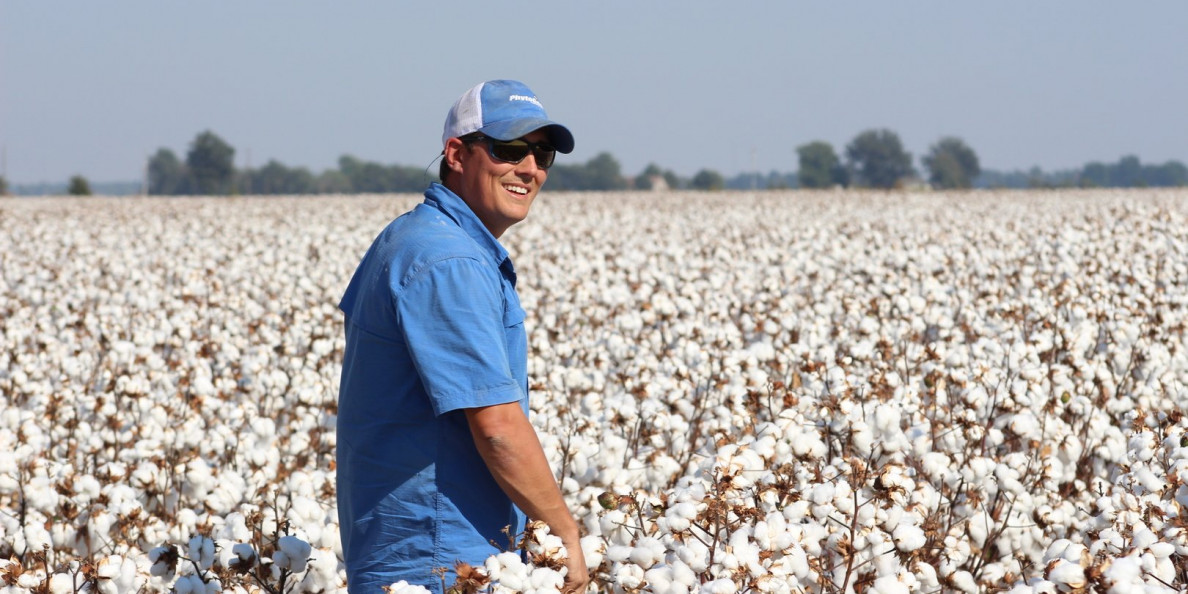The April USDA Foreign Agriculture Service world market and trade report for cotton paints a bleak picture for farmers already struggling with depressed prices.
The latest report, released April 9, reflects the impact the coronavirus is having on trade. The forecast indicates world cotton consumption down 7.6 million bales (or 6.4 percent) from last month, "the largest monthly change in consumption in USDA’s database."
U.S. spot prices are down about 25% since January. Cotton acreage, estimated to be down less than 1% in the USDA's most recent forecast, is likely to drop more, says National Cotton Council CEO Gary Adams.
"The sharp drop in cotton demand due to the COVID-19 pandemic and the resulting decline in cotton prices will likely cause lower cotton plantings than what was shown in the USDA Prospective Plantings report released at the end of March," Adams says. "The planting survey conducted by the Council earlier this year showed a 5% decline from last year. I believe that was a good estimate at the time, but at current prices, I expect the decline to be larger."
Apparel sales down
A big factor in the recent decline, according to the FAS report, coincides with government stay-at-home directives to limit spread of COVID-19. The report notes that the widespread closure of shopping malls and retail outlets by the world's two largest apparel importers, the United States and the European Union, created massive disruption in apparel sales.
Also, unprecedented U.S. unemployment results in significantly less discretionary income available to buy optional items such as apparel.
The report indicates weak consumer demand likely will persist and negatively affect cotton demand. Retailers are reducing and canceling orders for textiles and apparel worldwide.
Adams says cotton has rebounded from past downturns but predicting how soon recovery will begin depends on a lot of uncertainties.
"At this point, there are just too many unknowns to make a confident projection about how quickly cotton demand will recover," he says. "Looking back over the last 25 years, we've witnessed mixed results in terms of how quickly demand rebounded.
"In 1998, the Asian financial crisis lowered world mill use by 2.5 million bales, and the following year, we saw a 6 million bale recovery. The recession of 2008 and early 2009 caused a 13.5 million bale decline in mill use, but much of that loss was recovered in the following year when mill use rebounded by 9 million bales."
The 2011 downturn was harder to overcome, he says.
"When cotton prices spiked to more than $2 per pound in early 2011, world mill use fell by a combined 15 million bales over the course of the 2010 and 2011 marketing years. Following 2011, it took a full six years to recover the 15 million bales lost due to the price spike.
"Going forward, the key factors to watch will be the recovery in the overall economy, the extent to which unemployment rates remain at higher levels, and how quickly shoppers are able to return to retail shopping."
Government assistance
Adams says U.S. cotton farmers and others in the industry will need more government assistance to recover.
"Based on statements from the White House and USDA, options to provide additional support for agriculture are under consideration. The Phase 3 stimulus package included additional funds to aid U.S. agriculture. Given the sharp drop in cotton demand and the decline in prices, emergency assistance will be needed by the U.S. cotton industry in order to cope with the current economic upheaval.
"All segments from the cotton producer to the textile manufacturer are experiencing economic damage," he adds. "We are urging USDA to use its authority to provide support to those segments that are most critically impacted."
Adams says commodity organizations supported by check-off fees and other production-based funds will find ways to continue serving their industries.
"The industry has experienced difficult times in the past and has done what is necessary to survive. It’s during these times that we see adjustments and changes in how we do business, and I expect the current situation will be no different."
Silver lining?
Agriculture thrives on optimism, but the current convergence of trade disputes, high production costs and now the pandemic, finding positive outlooks is difficult, but not impossible.
"At this point, it can be difficult to see the silver linings, but yes, we still have a very positive message about U.S. cotton that will help grow demand once we get past the impacts of the pandemic," Adams says. "Cotton demand experienced several years of growth before the trade dispute with China and then the COVID-19 pandemic. Once we are past the pandemic, that strong message about the quality, reliability and sustainability of U.S. cotton will drive us to a positive future.
"I would also add that the nature of the current crisis could put a renewed focus on the importance of maintaining a domestic manufacturing base. We’ve seen the U.S. textile industry redirect production lines in order to quickly produce critical healthcare-related textile products."
Πηγή: farmprogress.com

